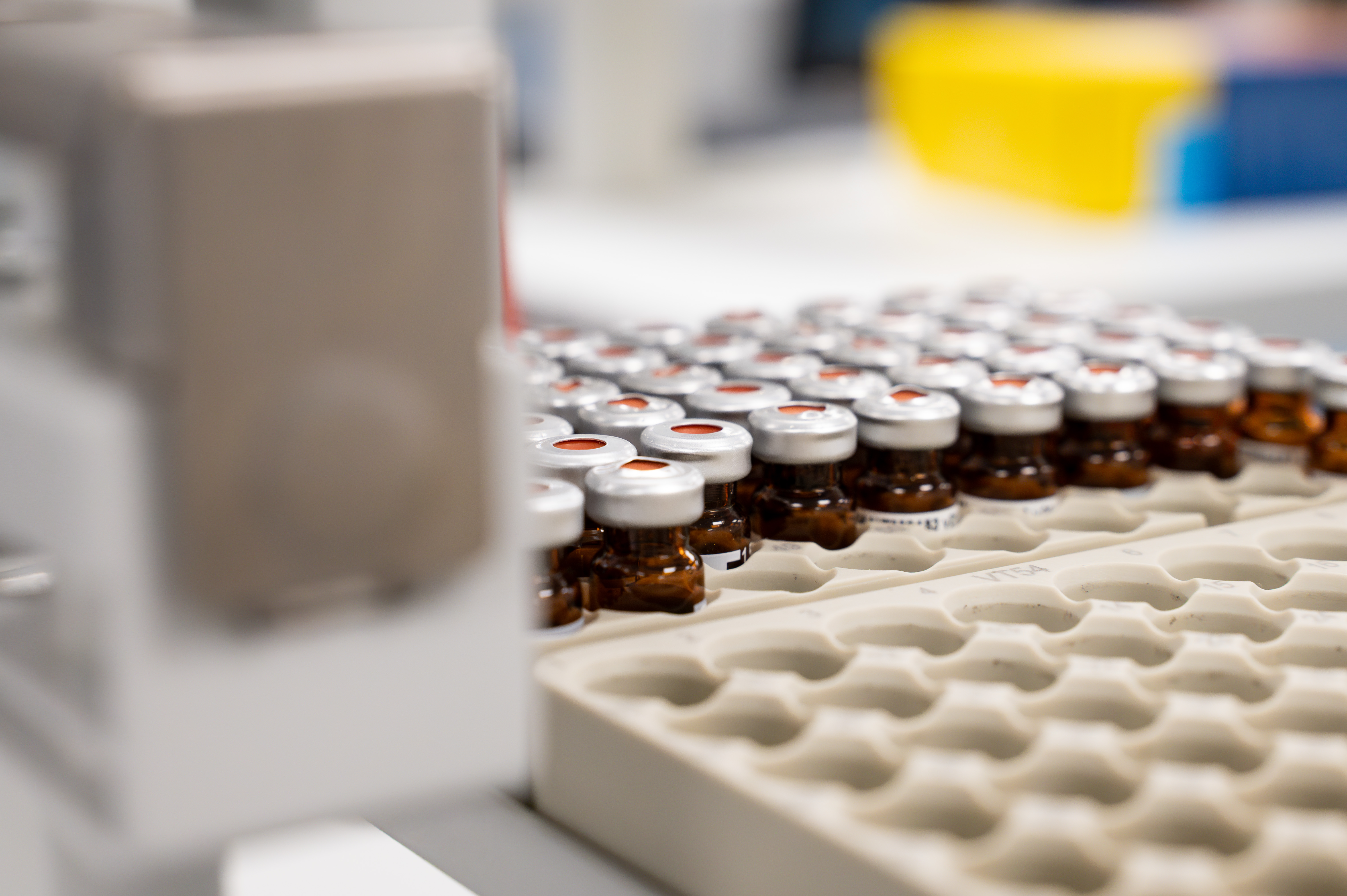Broughton expands analytical testing services with a one-stop solution for Extractables and Leachables
2025 Trends in the Pharmaceutical Industry: Innovation, Regulation, and Broughton’s Role in Shaping the Future
Pharmaceuticals

Dec 18, 2024 | Published by Broughton
Pharmaceuticals, Trends
The pharmaceutical industry is set to experience transformative developments in 2025, driven by advancements in technology, evolving regulatory frameworks, and a focus on sustainability. Key areas such as drug development, stability storage, extractables and leachables (E&L) testing, and drug delivery systems are at the forefront of this evolution. Our blog takes a closer look at the trends shaping the future of the pharmaceutical industry.
Accelerating Drug Development
Technological advancements like AI and machine learning are revolutionising drug development processes. These tools are enabling faster identification of drug candidates, optimising clinical trial designs, and reducing costs associated with traditional research and development. AI-driven platforms can predict drug interactions and efficacy more accurately, accelerating the path from discovery to market.
Personalised medicine is also advancing, with breakthroughs in genomics and bioinformatics driving tailored therapies. Treatments designed for specific patient populations, such as those based on genetic profiles, are improving outcomes and reducing side effects. These developments are transforming how companies approach drug pipelines and patient care.
Navigating Regulatory Complexity
Evolving regulations remain a challenge for the pharmaceutical industry. Agencies like the FDA and EMA are refining guidance to keep pace with innovations in drug delivery systems, including injectables, inhalables, and implantables. Regulatory scrutiny on extractables and leachables has also increased, requiring comprehensive testing to ensure the safety of packaging and drug delivery devices.
Global harmonisation efforts aim to reduce discrepancies across regulatory systems, streamlining compliance for companies operating in multiple markets. However, adapting to these evolving standards requires careful planning and robust scientific evidence to support submissions. The emphasis on quality, safety, and transparency will continue to shape regulatory strategies.
Stability Testing and Shelf-Life Optimisation
Stability testing remains a cornerstone of pharmaceutical development, especially as biologics and complex formulations dominate the market. Understanding how products perform under various conditions is critical to ensuring safety and efficacy throughout their shelf life.
Companies are increasingly investing in advanced storage facilities and accelerated stability studies to meet regulatory demands and optimise production timelines. By gathering robust stability data, pharmaceutical developers can ensure products are market-ready while minimising delays in the approval process.
Sustainability in Pharmaceuticals
Sustainability is no longer optional for the pharmaceutical industry. Companies are adopting eco-friendly practices to meet both regulatory requirements and consumer expectations. Efforts include:
- Green Manufacturing: Leveraging renewable energy sources and reducing waste in production processes.
- Sustainable Packaging: Transitioning to biodegradable or recyclable materials to minimise environmental impact.
- Water Conservation: Implementing efficient irrigation systems for manufacturing operations.
These initiatives align with global environmental goals, enhancing the industry’s reputation while reducing its ecological footprint.
Advancements in Drug Delivery Systems
Innovation in drug delivery systems is enhancing patient outcomes and adherence. Inhalable, injectable, and controlled-release mechanisms are becoming more sophisticated, offering greater precision and convenience for patients. These advancements are particularly impactful for chronic disease management, where consistent and effective dosing is critical.
Researchers are also exploring new materials and technologies, such as bioresorbable implants and nanotechnology-based carriers, to improve drug bioavailability and reduce side effects. These developments represent a significant step forward in addressing unmet medical needs and improving the overall patient experience.
Conclusion
The pharmaceutical industry in 2025 will be shaped by innovation, regulatory evolution, and sustainability. From AI-driven drug discovery to advanced drug delivery systems, the sector is making strides to meet the demands of a rapidly changing landscape. Companies that embrace these trends and prioritise compliance, sustainability, and patient-centric approaches will be best positioned for long-term success.
As the industry navigates these challenges and opportunities, collaboration and adaptation will remain essential. The future of pharmaceuticals promises not only innovation but also improved health outcomes and a more sustainable footprint.
Download our guide to learn more about Broughton's pharmaceutical stability testing expertise.


